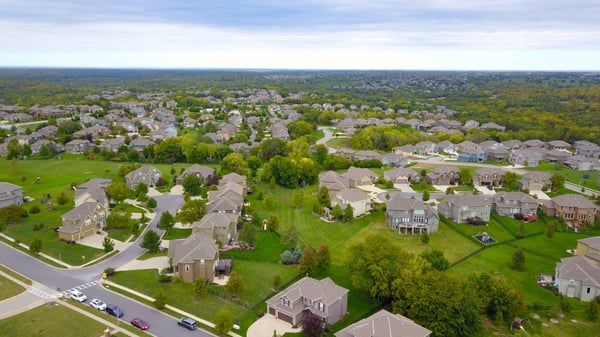As a builder or investor, if you’ve just built a new home or a whole new development, one important thing not to overlook is landscaping. Even if a buyer is purchasing a home in a brand new subdivision, they still want it to look as move-in ready and established as possible. The exterior of the home is the potential buyer’s first impression, so taking the time and spending the money to ensure it doesn’t look like a just-completed construction site can help you add value to your new build. Buyers are also attracted to landscaping that doesn’t require a ton of work. Below, we’ve outlined some important first steps in landscaping a new build, as well as suggestions for plants that are hardy and provide good value for money to you, the investor.
Prep the Property
One of the first things you’ll need to do before purchasing plants or even laying down sod, is to remove construction debris from the soil. Throughout the construction process, as heavy machinery moves across the property, it is quite common for construction debris to get buried underneath. Removing this doesn’t need to be a monumental task as it is something that can be done in sections, as you go. Part of removing debris should also include loosening or tilling the soil to get it ready for planting. Flattened down soil, common on construction sites, isn’t conducive to plant growth.
Add top soil and fertilizer
Since you won’t necessarily know what kind of soil you’re working with on your site, or how healthy it is, adding a layer of topsoil along with fertilizer is an important (and easy!) way to help new grass and plants grow. If it’s in your budget, adding mulch to the top two inches of soil will also help keep the soil healthy and moist for future plant growth.
Plant grass from seeds or sod
Lawns are the easiest, cheapest and fastest way to cover up the largest amount of surface area on a new lot. On average, a roll of sod costs between 28-45 cents per square foot, and creates instant curb appeal once it is laid down. Just remember to keep your rolled sod in a shaded area on the property before laying it down. Planting grass from seeds is another, even cheaper option but does not create an instant result. It is a good idea, however, on properties that aren’t totally flat or have lots of slopes, ridges, or areas where laying sod would be tricky.
Best Plants for New Construction
If you want to add more than just grass to your new build, your goal is probably to create the most curb appeal at the lowest cost to you. In order to achieve this, look for tough plants that spread easily and cover a lot of area. This will create a lush, established look without a high price tag. Hydrangeas are an excellent choice as they are easy to grow, easy to care for, spread abundantly, and bloom beautifully.
Nandina shrubs are another excellent choice. According to HGTV, “Nandina, or heavenly bamboo, provides four-season curb appeal in some regions...These practically carefree shrubs have airy-looking foliage and white flowers in the spring. In fall, red berries appear and the foliage turns vibrant shades of red, bronze and purple.”
Finally, hostas are an excellent choice if you want a beautiful, verdant look, but are dealing with a property that doesn’t get a lot of sun. Hostas love shade, and work well to fill in holes or open spaces in the soil around brand new trees. Hostas are tough, hardy plants whose leaves change colors throughout the season and they come in different sizes making them a convenient choice for almost any property.
In the end, no matter what you choose, creating established-looking curb appeal does not need to be difficult or expensive but will make a big difference to potential buyers. Think about popular, easy options like lawns, and accent areas around the home or around the yard’s perimeter with easy, inexpensive plants that are tough all year round. Whatever you choose, be sure to take your region’s climate into consideration and consult a garden expert at your local nursery or garden center.

Recent Posts
- Spec Home Loans: Complete Guide to Construction Financing for Builders
- Spec Construction Loans: A Spec Line of Credit Is Worth the Paperwork
- Spec Homes and Pre-Sale Homes: Relative Benefits for a Spec Builder
- Spec Construction Success: Insights for the Investor Builder
- How Is a Spec House Different From Other Kinds of House Construction?
